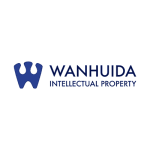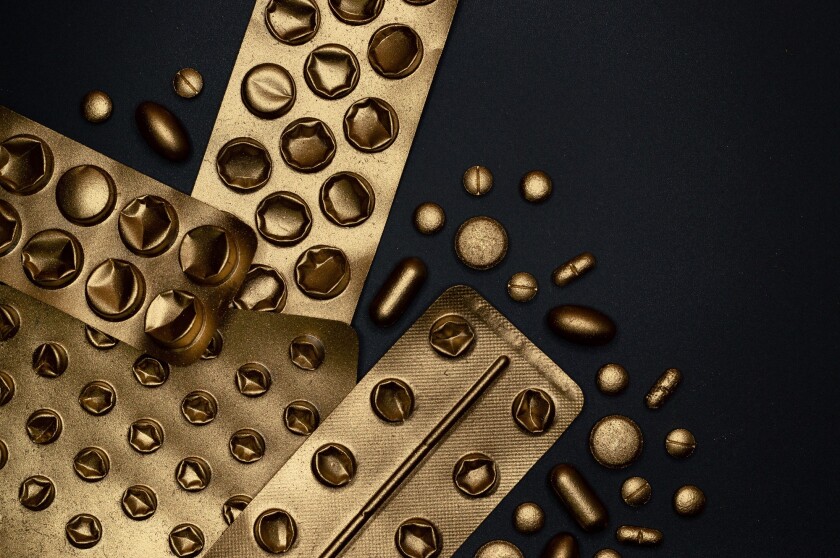An evolving judicial landscape
China’s judicial practice over infringement assessment and damages awards surrounding offering to sell a patented drug has been evolving over the past 20 years. The landscape has undergone seismic changes increasingly tilting the balance in favour of the patentee.
Offering for sale used to be characterised by Chinese courts as the preparatory stage of sale rather than a standalone act. The judicial infringement assessment over offering to sell a patented drug relied heavily on the availability of the infringing drugs for over a decade. That is to say, in cases where there was no infringing product readily available for sale, courts were prone to find non-infringement.
In the 2007 case Eli Lilly and Company v Gan & Lee Pharmaceuticals Co., Ltd., the Beijing High Court held that: "The act of offering to sell, which predates actual sale, aims to facilitate sale. In order to serve that purpose, not only shall the alleged infringer manifest an explicit intention to sell the infringing product, but also the said product shall be available for sale when such intention is manifested."
The court therefore concluded that, despite the defendant’s promotion of the allegedly infringing ‘Prandilin’ insulin on its website, evidence did not suffice to prove that the promotion was designed for the purpose of selling the product and the act did not constitute offering for sale. No offering for sale, no infringement.
The case set a high bar for the finding of offering for sale and the doctrine seemed to be advocated by the Beijing courts until 2017, as this case was cited in the Interpretation and Application of the Beijing High Court’s Patent Infringement Assessment Guideline (2017) as an exemplary case to underline that the availability of the infringing product is a key parameter in the finding of offering for sale. Infringers with legal acumen cunningly circumvented infringement liability, employing the following tactic: promoting patented drugs at fairs and exhibitions, and only setting manufacture in motion upon receiving orders.
Fortunately, there were dissenting opinions. In BASF SE v Hailir Pharmaceutical Group Co., Ltd. et al. (2015), the Shanghai No. 1 Intermediate Court took a different stance from the Beijing courts, finding that: “The act of offering to sell is a standalone patent exploitation act, which does not necessarily hinge on the simultaneous existence of manufacture or sale. In the meantime, the manifestation of intention to sell is not necessarily based on the premise of the physical existence of the accused infringing product.”
This is a positive step forward in assessing infringement of the act of offering for sale. Nevertheless, patentees still face another hurdle to obtaining monetary damages associated with offering for sale, as courts have not yet recognised the harm caused by the offering to sell act. No harm, no damages. In BASF SE v Shandong Binnong Technology Co., Ltd. (2016), despite the finding of offering for sale, the Shanghai Intellectual Property Court denied the patentee's request for damages, only awarding BASF reasonable expenses incurred for stopping the infringement.
The rationale behind this is: "As to the amount of damages, given that the defendant's offering to sell act did not result in the decrease of the market share of the plaintiff's patented products and thus caused no actual losses to the plaintiff, the court found the plaintiff's request for damages is without merit". The reasoning was affirmed by the Supreme People’s Court (SPC) in Beijing HuaJieSheng Electromechanic Equipment Ltd. v Shenzhen DingSheng Gate Control Technology Ltd. (2018), where the retrial petitioner’s request for damages was also overruled.
Three years later, the SPC seemed to have a change of heart. It stated in Shenzhen Kean Silicone Product Co., Ltd. v Dongguan Yatian Silicone Product Co., Ltd. et al. (2021) that: "The existence of the act of offering to sell will cause reasonably foreseeable damage to the patentee, like price erosion of the patented product, decrease or delay of business opportunities. Where there is a wrong there is a remedy. Unless otherwise specifically provided by laws, the remedy should include at least two most fundamental forms of tort liability, namely cessation of infringement and indemnification for losses, rather than only one of them."
That is to say that patentees may request the indemnification of damages, apart from cessation of infringement, in cases of infringement surrounding offering for sale.
In 2022, the SPC used two decisions in Nanjing Hencer Pharmaceutical Co., Ltd. v Nanjing IP Office and Nanjing Lifenergy R&D Co., Ltd. v Nanjing IP Office to clarify several key issues. These included whether offering for sale hinges on the availability of the patented drug, whether a disclaimer from the accused infringer creates exemption from infringement liability, and whether the Bolar exemption applies to the act of offering for sale.
Facts of the case
Bayer Intellectual Property GmbH (Bayer) owns the invention patent relating to the blockbuster anticoagulant drug rivaroxaban. On November 29 2019, Bayer filed a complaint with the Nanjing Intellectual Property Office (IP Office), alleging that Nanjing Hencer Pharmaceutical Co., Ltd. and its subsidiary Nanjing Lifenergy R&D Co., Ltd. (collectively referred to as the alleged infringers) had infringed its patent by offering to sell the rivaroxaban products. Bayer contended that the alleged infringers were engaged in offering to sell the patented drug by promoting rivaroxaban tablets and rivaroxaban APIs at the 18th Chemical Pharmaceutical Ingredient China Exhibition (CPhI) and on their websites by way of displaying the packaging bottle and box with clear product specification, registered trademarks and manufacturer information. Bayer requested cessation of the infringement.
Bayer’s allegation met the following rebuttals:
The accused did not manifest a substantive intention to sell. Without acquiring a registration license for rivaroxaban, the accused is not allowed to manufacture and/or sell the drugs. Moreover, the accused had explicitly included a disclaimer in the CPhI promotion material, which read "Patented products (are) available for research & development use as permitted under CFR35 sec.271 (e)(1)". Therefore, the alleged acts did not constitute offering for sale.
Even if the acts did constitute offering for sale, they should be exempt from patent infringement liability as the acts fall under the scope of Bolar exemption as stipulated in Article 69.5 of the 2008 Patent Law. The accused infringers argued that Bolar exemption implicitly includes the acts of "sale" and "offering for sale". The target audience of the accused is the pharmaceuticals that are about to apply for the registration of the generic version of rivaroxaban, thus the alleged acts constituted offering for sale "aiming to provide the information required for regulatory examination and approval" for others.
On May 25 2020, the Nanjing IP Office made administrative decisions in favour of Bayer, finding that the alleged acts constituted offering for sale, and ordered cessation. The alleged infringers filed administrative lawsuits, challenging the decisions of the Nanjing IP Office before the Nanjing Intermediate Court, which sided with the Nanjing IP Office. The alleged infringers appealed to the SPC IP Court.
The court of appeal dismissed the appeals based on the reasoning below:
Offering to sell is a statutory and independent act of infringement. The assessment over whether the tortfeasor is to bear civil liability associated with offering to sell is not based on the premise of the actual occurrence of sales activity. Where a sale agreement is reached, the act no longer falls under the category of offering for sale. It is indeed sale. The act of offering to sell may postpone the purchase of patented products made by unspecified buyers from the patentee and would consequently undermine the legitimate rights and interests of the patentee.
In essence, offering to sell is a unilateral manifestation of the seller’s intention, which does not hinge on the availability for sale of the infringing product. Offering for sale may be established as long as the intention to sell is clearly manifested. The absence of contractual terms like price, supply of goods, and product batch number, has no bearing on the determination of offering for sale. Offering to sell may aim at specified or unspecified targets, and it may appear in the form of an offer or an invitation for offer. The alleged infringers have shown their explicit intention to sell the products, which constituted offering for sale.
The acts of the alleged infringers, such as indicating the original drug manufacturer and the original drug as well as the inclusion of a disclaimer, serve the purpose of facilitating the potential buyer’s purchase of the infringing product and have no bearing on the determination of offering for sale.
The Bolar exemption may serve as a non-infringement defence in either of these two scenarios: where an entity is applying for regulatory examination and approval on its own account, or for the purpose of facilitating the application for regulatory examination and the approval of another entity. In the second scenario, the Bolar exemption does not apply unless the accused is assisting another entity that does exist in reality, in acquiring the said regulatory approval. The accused, in this case, targeted an unspecified audience, rather than a specific entity that was about to apply for the registration of the generic version of rivaroxaban products. The Bolar exemption thus is not applicable to the alleged infringers.
The Bolar exemption does not exempt the infringement liability of offering to sell. Although the alleged infringers attempted to justify their act, arguing that their promotion enabled them to reach out to potential generic drug makers, the Court found the argument inconsistent with the express provisions of law and ruled that the act would unreasonably squeeze the legitimate interests of the patentee.
Comments
The SPC’s aforementioned decisions are expected to help establish a stable jurisprudence in terms of infringement assessment surrounding entities offering to sell patented drugs.
For starters, the SPC significantly lowers the threshold for assessing the act of offering for sale, affirming the below principles:
Offering for sale is not based on the actual occurrence of sales activity;
The unavailability of the products being offered for sale, the absence of contractual terms, and the inclusion of a disclaimer has no bearing on the finding of offering for sale; and
Offering for sale may be established, so long as the intention to sell is clearly manifested.
Secondly, it reiterates that the Bolar exemption should be interpreted literally so that the entities eligible to invoke the clause are either:
“An entity [that] manufactures, uses, or imports a patented medicine or a patented medical apparatus” for the purpose of providing information needed for regulatory examination and approval on its own account or
“Another entity that manufactures [or] imports the patented medicine or the patented medical apparatus specifically for the aforesaid entity”.
In other words, in the context where an entity is assisting another in the process of seeking regulatory approval for patented drug or medical apparatus, the latter shall be a specific entity, rather than an unspecified audience. The SPC makes it clear that the Bolar exemption shall not be broadly interpreted as covering the entity that offers for sale, but that it appeals to unspecified targets.













